Angela Vincent is Emeritus professor at the University of Oxford and a Fellow of Somerville College, Oxford.
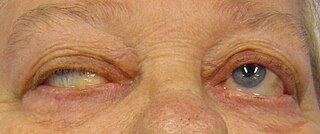
Myasthenia gravis (MG) is a long-term neuromuscular junction disease that leads to varying degrees of skeletal muscle weakness. The most commonly affected muscles are those of the eyes, face, and swallowing. It can result in double vision, drooping eyelids, trouble talking, and trouble walking. Onset can be sudden. Those affected often have a large thymus or develop a thymoma.
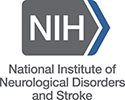
The National Institute of Neurological Disorders and Stroke (NINDS) is a part of the U.S. National Institutes of Health (NIH). It conducts and funds research on brain and nervous system disorders and has a budget of just over US$2.03 billion. The mission of NINDS is "to reduce the burden of neurological disease—a burden borne by every age group, every segment of society, and people all over the world". NINDS has established two major branches for research: an extramural branch that funds studies outside the NIH, and an intramural branch that funds research inside the NIH. Most of NINDS' budget goes to fund extramural research. NINDS' basic science research focuses on studies of the fundamental biology of the brain and nervous system, genetics, neurodegeneration, learning and memory, motor control, brain repair, and synapses. NINDS also funds clinical research related to diseases and disorders of the brain and nervous system, e.g. AIDS, Alzheimer's disease, epilepsy, muscular dystrophy, multiple sclerosis, Parkinson's disease, spinal cord injury, stroke, and traumatic brain injury.

A neuromuscular disease is any disease affecting the peripheral nervous system (PNS), the neuromuscular junction, or skeletal muscle, all of which are components of the motor unit. Damage to any of these structures can cause muscle atrophy and weakness. Issues with sensation can also occur.

Wilhelm Heinrich Erb was a German neurologist. He was born in Winnweiler, and died in Heidelberg.

John Michael Newsom-Davis was a neurologist who played an important role in the discovery of the causes of, and treatments for, Myasthenia gravis, and of other diseases of the nerve-muscle junction, notably Lambert–Eaton myasthenic syndrome and acquired neuromyotonia. Regarded as "one of the most distinguished clinical neurologists and medical scientists of his generation," he died in a car accident in Adjud, Romania, having visited a neurological clinic in Bucharest earlier the same day.
Steven T. DeKosky is the Aerts-Cosper Professor of Alzheimer's Research at the University of Florida (UF) College of Medicine, deputy director of UF’s Evelyn F. and William L. McKnight Brain Institute (MBI) and associate director of the 1Florida Alzheimer’s Disease Research Center.

Gerald D. Fischbach is an American neuroscientist. He received his M.D. from the Weill Cornell Medical College of Cornell University in 1965 before beginning his research career at the National Institutes of Health in 1966, where his research focused on the mechanisms of neuromuscular junctions. After his tenure at the National Institutes of Health, Fischbach was a professor at Harvard University Medical School from 1972–1981 and 1990–1998 and the Washington University School of Medicine from 1981–1990. In 1998, he was named the director of the National Institute of Neurological Disorders and Stroke before becoming the Vice President and Dean of the Health and Biomedical Sciences, the Dean of the Faculty of Medicine, and the Dean of the Faculty of Health Sciences at Columbia University from 2001–2006. Gerald Fischbach currently serves as the scientific director overseeing the Simons Foundation Autism Research Initiative. Throughout Fischbach's career, much of his research has focused on the formation and function of the neuromuscular junction, which stemmed from his innovative use of cell culture to study synaptic mechanisms.
Avindra "Avi" Nath, is a physician-scientist who specializes in neuroimmunology. Nath is a senior investigator, and intramural clinical director of the National Institute of Neurological Disorders and Stroke (NINDS) at the National Institutes of Health (NIH) in the United States. At NINDS, Nath also leads the Section of Infections of the Nervous System and plans to institute a translational research center. He previously served in several research and administrative positions at the Johns Hopkins Hospital and the Johns Hopkins University School of Medicine.
The Rare Diseases Clinical Research Network (RDCRN) is an initiative of the Office of Rare Diseases Research (ORDR). RDCRN is funded by the ORDR, the National Center for Advancing Translational Sciences and collaborating institute centers. The RDCRN is designed to advance medical research on rare diseases by providing support for clinical studies and facilitating collaboration, study enrollment and data sharing. Through the RDCRN consortia, physician scientists and their multidisciplinary teams work together with patient advocacy groups to study more than 200 rare diseases at sites across the nation.
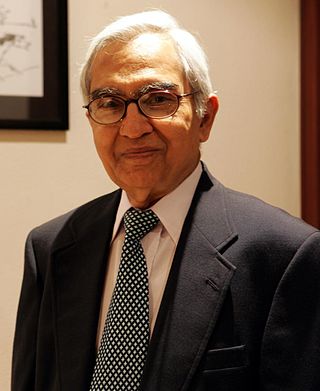
Dr. Bhim Sen Singhal is the Director of Neurology at Bombay Hospital Institute of Medical Sciences in Mumbai, India.
Alfred Jaretzki III was an American surgeon and medical professor. Early in his career, he co-authored a seminal journal article on developing synthetic vascular glands, which informed the growth of practices in aortic aneurysm surgery. Jaretzki served as a professor of clinical surgery at the Columbia University College of Physicians and Surgeons, a lecturer at the Columbia Presbyterian Hospital, and led the task force of the Medical Scientific Advisory Board of the Myasthenia Gravis Foundation of America.
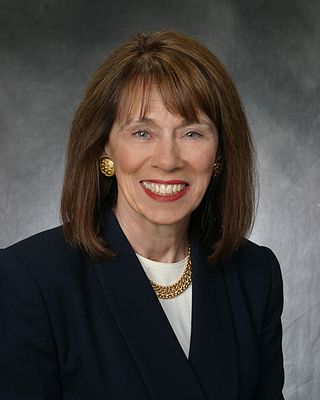
Patricia A. Grady is an American neuroscientist internationally recognized for her research on stroke, which specializes in cerebral blood flow, metabolism, and function. She is director of the National Institute of Nursing Research (NINR), part of the National Institutes of Health (NIH) in Bethesda, Maryland. Grady was elected to the Institute of Medicine in 1999 and is a member of several scientific organizations, including the Society for Neuroscience and the American Academy of Nursing. She is a fellow of the American Stroke Association and the American Neurological Association.

Judith L. Rapoport is an American psychiatrist. She is the chief of the Child Psychiatry Branch at the National Institute of Mental Health (NIMH), part of the National Institutes of Health (NIH) in Bethesda, Maryland.
Arnold Richard Kriegstein is a neurologist and neuroscientist who is the John Bowes Distinguished Professor in Stem Cell and Tissue Biology at the University of California, San Francisco where he serves as director of the UCSF Eli and Edythe Broad Center of Regeneration Medicine and Stem Cell Research. His main research interests include neural stem cell and brain development. He is a member of the National Academy of Medicine.
Rebecca Gottesman is Senior Investigator and Stroke Branch Chief at the National Institute of Neurological Disorders and Stroke (NINDS) at the National Institutes of Health (NIH). Before joining NINDS, she was Professor of Neurology and Epidemiology at Johns Hopkins University. Gottesman completed a B.A. in Psychology at Columbia University (1995), an M.D. at Columbia University (2000), and a Ph.D. in Clinical Investigation at Johns Hopkins University (2007). She is a Fellow of the American Neurological Association (2012) and a Fellow of the American Heart Association (2015).
Melodie Winawer is a board certified neurologist and the director of clinical neuroscience education at the Columbia University College of Physicians and Surgeons. Her primary research is the genetics of epilepsy, in which she examines how certain genes are risk factors for epilepsy. She is also a published author.
Ralph Lewis Sacco was an American neurologist. He held the Olemberg Family Chair in Neurological Disorders, Miller Professor of Neurology, Public Health Sciences, Human Genetics, and Neurosurgery at the Leonard M. Miller School of Medicine at the University of Miami and Chief of the Neurology Service at Jackson Memorial Hospital. In 2020, Sacco was named editor-in-chief of the Stroke journal and the inaugural recipient of the Edgar J. Kenton III Lecture Award from the American Stroke Association.
Daniel B. Drachman is an American neurologist. He is one of the founding members of the Johns Hopkins University's Department of Neurology.
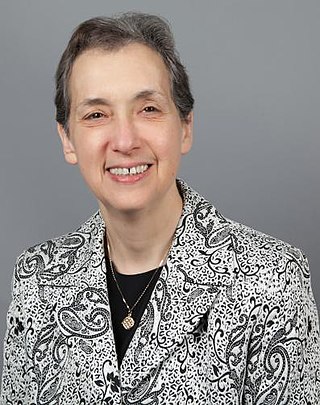
Nina Felice Schor is an American physician-scientist and pediatric neurologist. She has served as director of the NIH Intramural Research Program since the Fall of 2022. Schor was the deputy director of National Institute of Neurological Disorders and Stroke from 2018 to 2022. She was the William H. Eilinger Chair of the Department of Pediatrics at University of Rochester and Pediatrician-in-Chief of the Golisano Children’s Hospital from 2006 to January 2018.










